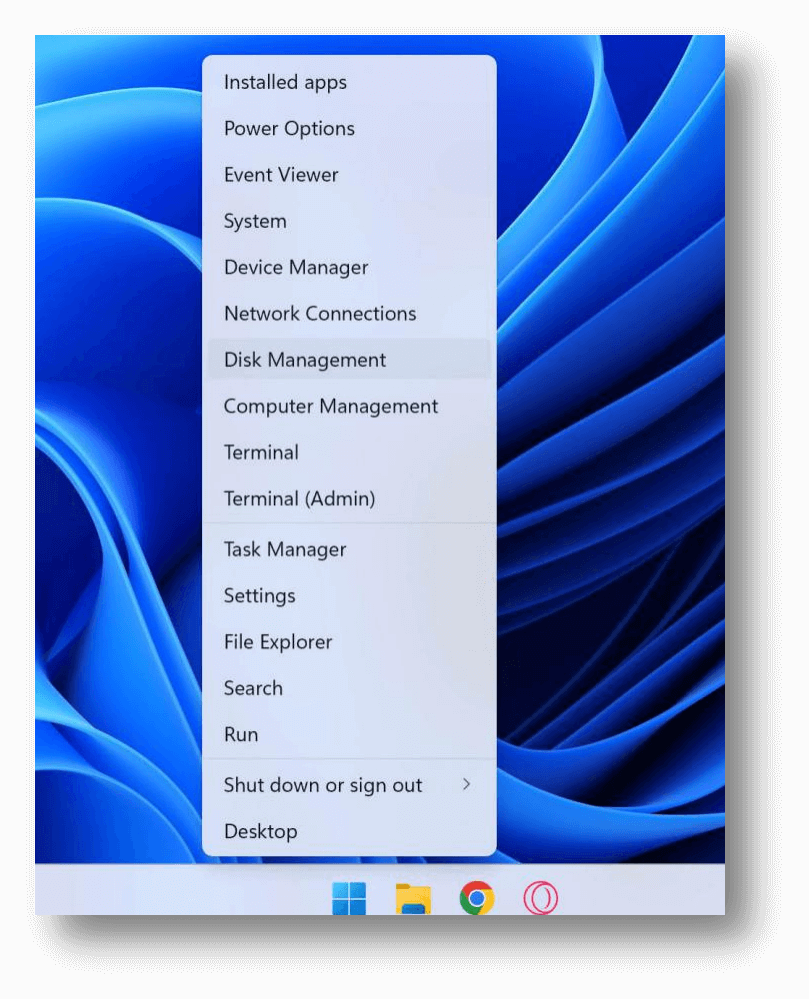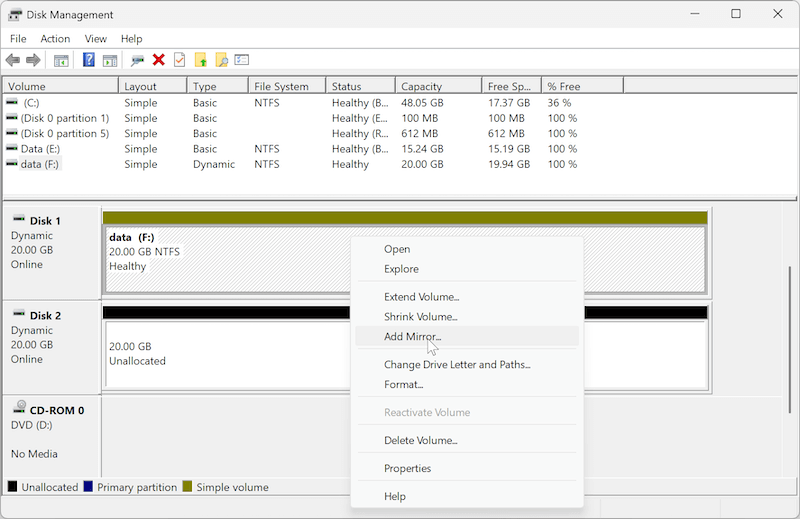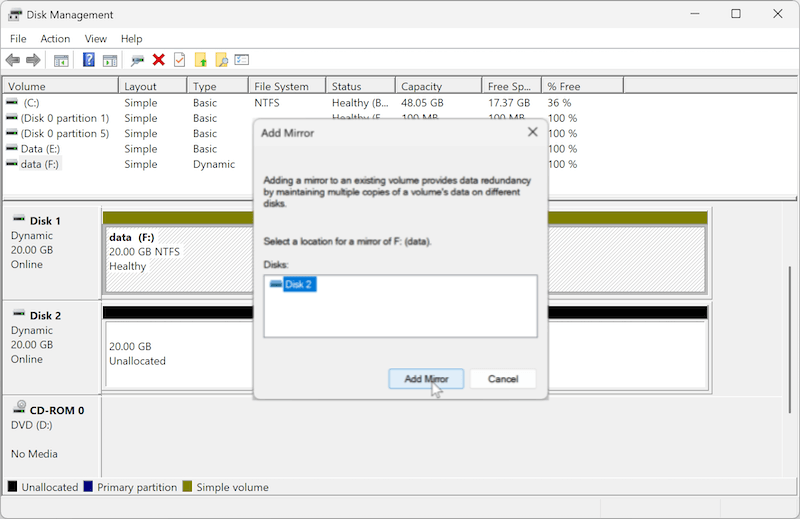Quick Navigation:
- What's disk mirroring?
- Why mirror a hard disk?
- How to mirror a hard drive in Windows?
- How to clone a hard drive on macOS?
- Conclusion:
Do you ever stop thinking about what may occur if your computer suddenly stops working? Many users at once can be affected by a hard disk failure which can be disastrous for an organization's ability to run its day-to-day operations smoothly. It would result in the loss of what kind of data?
There are photos, financial records, names, and numbers of people who matter. Everything, including a hard drive, becomes more and more dated over time. If your hardware fails, you'll lose all of your data.
Data backups are a common way for people to safeguard themselves, but this isn't always enough for everyone. You can always have a second, identical copy of the primary system drive using disk mirroring. Data loss is a major concern for most people and businesses who employ disk mirroring.

You can create a mirror image of your hard drive by installing two identical drives, converting them to dynamic disks, and designating the secondary drive as a mirror. Users will not experience any downtime if one of the two drives fails. The system will continue to use the other drive.
Also, with reliable disk cloning software DoYourClone, it will be easy and convenient to mirror hard drive without limits on both Windows and Mac machines.
What's disk mirroring?
When a hard drive fails, a computer's data and other assets are safeguarded by disk mirroring. A disk controller card links two or more identical hard drives, each connected to a separate copy of the replicated data. If one of the mirrored hard drives fails, the data on the other drives can be recovered.
An arrangement known as a redundant array of separate disks is used by many systems set up with disk mirroring (RAID). Setting up several hard drives so they can communicate with each other is done this way.
Why mirror a hard disk?
Many users would prefer to mirror their hard drives to a larger disk in situations with insufficient storage capacity. Nowadays, however, most people use an SSD as a mirror for their hard disk. How is an SSD possibly smaller than an HDD despite being priced similarly? In the following sections, you'll learn why it's important.
It safeguards your information from being lost. In the course of computer use, there are numerous sources of data loss. It's easy to avoid this problem by restoring your data from the mirrored SSD if your hard disk has already been mirrored.
It can enhance and accelerate your PC. Fast performance is important to all computer users, regardless of whether they use a desktop or a laptop. In terms of stability and speed, an SSD is superior to a hard disk drive (HDD). If you're looking to speed up your PC, swapping out your hard drive for an SSD is easy without reinstalling your operating system or any of your apps.
How to mirror an hard drive in Windows?
To mirror an hard drive in Windows, there are different methods you can choose. You can use the built-in tool Disk Management to mirror a hard drive. Also, you can use a third-party disk cloning software to mirror the hard drive.
Mirror hard drive in Disk Management
Create a mirrored volume from data already on the drive by following steps:
- Disk Management can be found under the Power User menu by pressing the Windows key + X keyboard shortcut.
![mirror hard drive]()
- Add a mirror to the primary drive by right-clicking it and selecting Add Mirror from the context menu.
![mirror hard drive]()
- Choose the drive that will act as a duplicate.
![mirror hard drive]()
- To include a second mirror, click the Add Mirror button.
![mirror hard drive]()
💡 Tips: To add mirror for a hard drive in Disk Management, the drives should be dynamic. If the drive is basic, you can convert it to dynamic. Also, you need to connect both disks as internal as the external drive cannot be convert to dynamic.
Clone with disk copy tool to mirror hard drive
As there are limits to mirror hard drive with the system built-in tool, you may need to mirror hard drive and create an exact copy in another way in some cases. For example, if you don't want to convert the drive to dynamic or you cannot connect another drive internally for laptop, it's not able to do the job with Disk Management. In such case, a third-party disk cloning software can help.
With disk cloning software, you can mirror a hard drive without these limits. Normally, disk copy application can clone any type of drives and create an exact mirrored copy. If you want to create an exact copy of your hard drive in any case, DoYourClone is highly suggested.
DoYourClone
- Securely mirror or clone hard drive on Windows and Mac.
- Create bootable clone backup for Windows OS and macOS.
- Create full disk image backup for hard drive.
Download and install the software on your computer. Then mirror your hard drive by cloning it with the software. Here are the steps:
Step 1. Start the software DoYourClone by double-clicking the shortcut of the software on desktop. To mirror an entire disk, choose the Disk Clone mode.
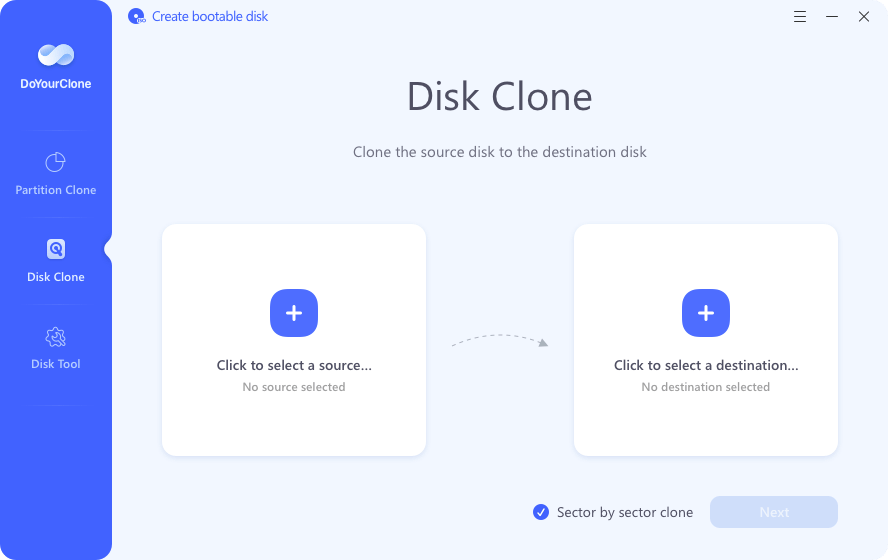
Step 2. Select the source drive at the left side, such as the system disk. Then select another empty disk as the destination disk.
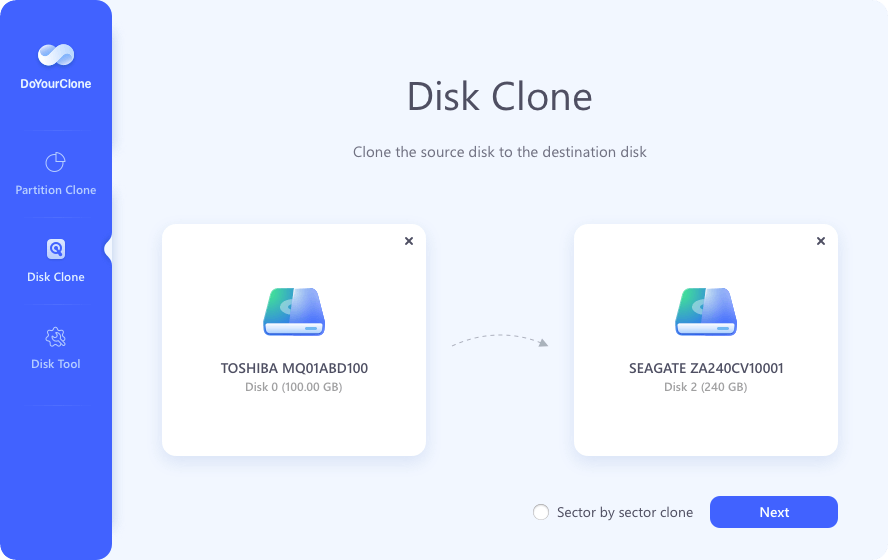
Step 3. Click the Next button to preview the disk layout. If necessary, you can edit the disk layout as you want. Tick "Check the option if the destination is SSD" if the destination drive is SSD.
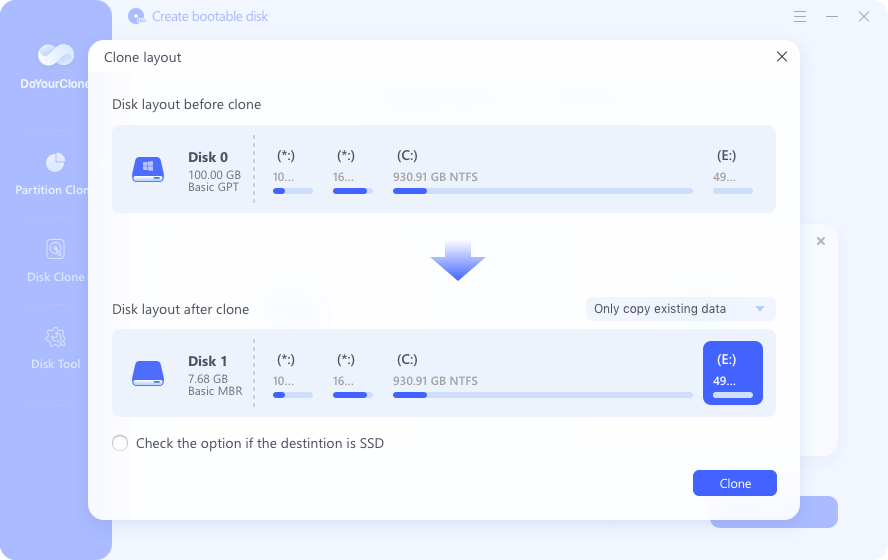
Step 4. Click on Clone button, the software will start to mirror the source disk to the destination disk by cloning all data.
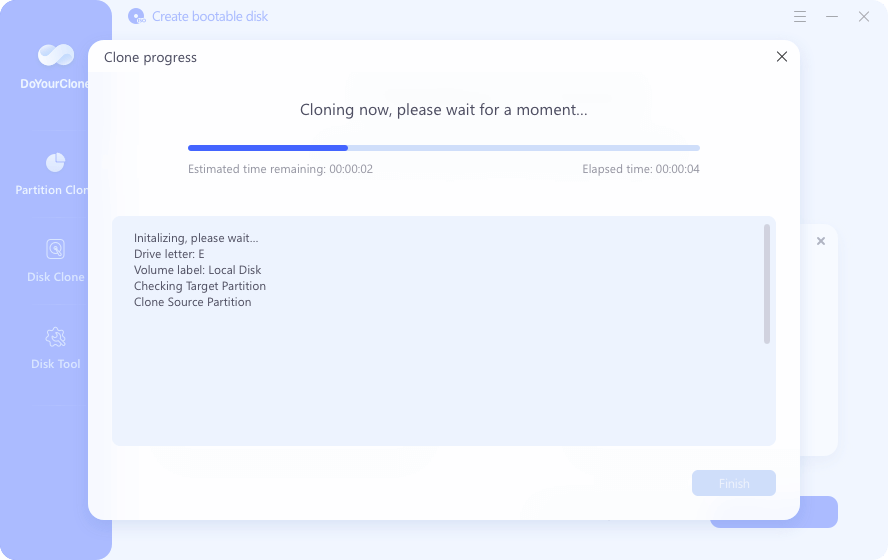
Step 5. It will take some time to mirror the disk. Once the process is finished, you can open the destination disk and check if all the files are copied successfully.

By cloning an system drive in this way, the cloned drive will also be bootable. You can use the cloned drive to replace the original drive as boot drive. This will be useful when you want to replace the system drive with larger one or SSD, or migrate system to another machine to avoid reinstalling everything.
How to clone a hard drive on macOS?
Hard disks on Macintosh computers are particularly vulnerable because they have moving elements. It's best to plan for the worst-case situation, such as a software failure or malware infection that might render your Mac inoperable. Whether you plan to migrate to a new Mac or prepare for a future failure, it's vital to know how to clone your macOS drive.
For this example, you can use DoYourClone for Mac to mirror hard drive on Mac:
Step 1. Download and install DoYourClone for Mac on your Mac computer.
Step 2. Open DoYourClone for Mac, choose disk cloning mode - Clone OS. Select the external hard drive as the destination drive.
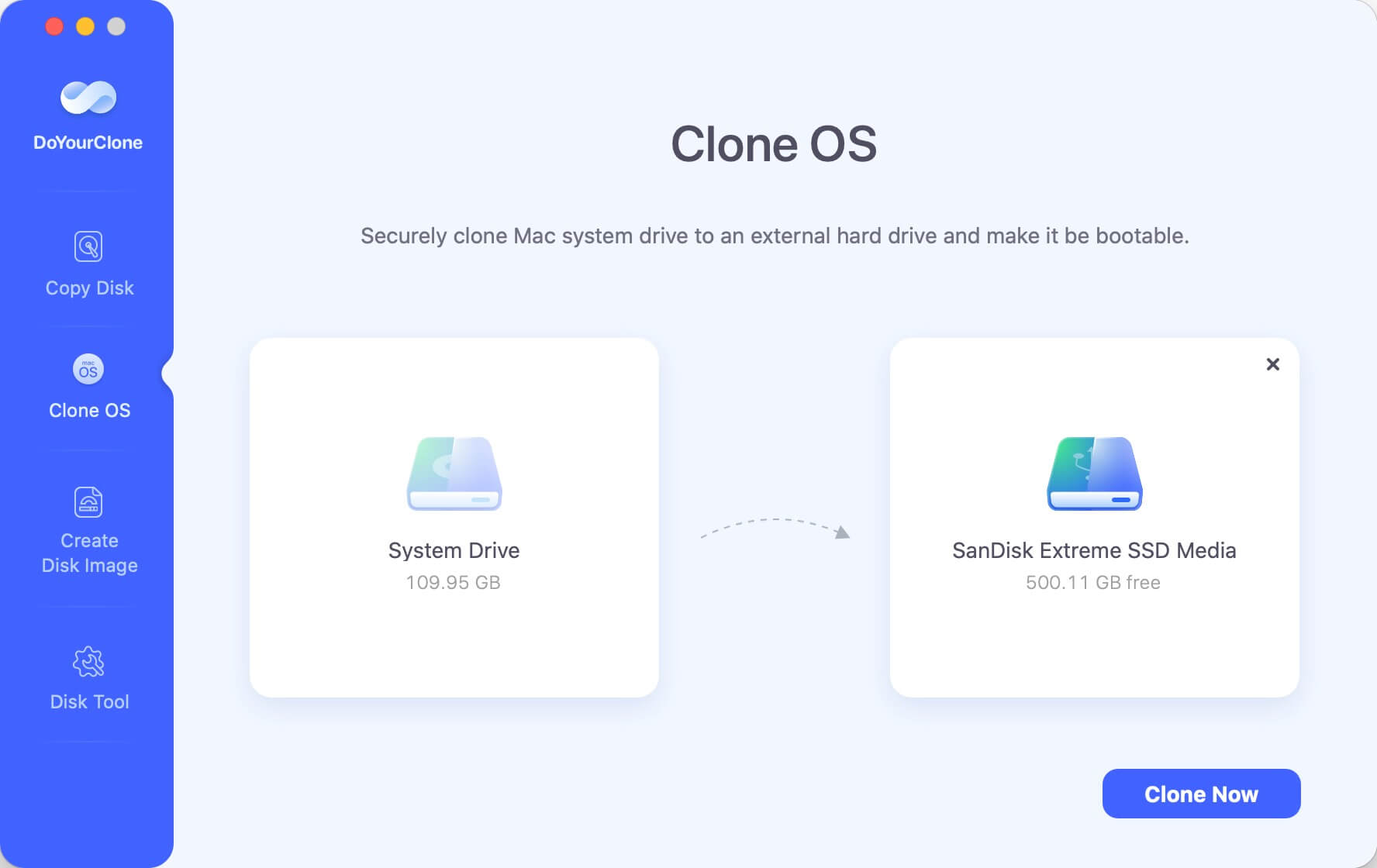
Step 3. Click on Clone Now button to securely clone all data from Mac’s startup disk to the destination drive.
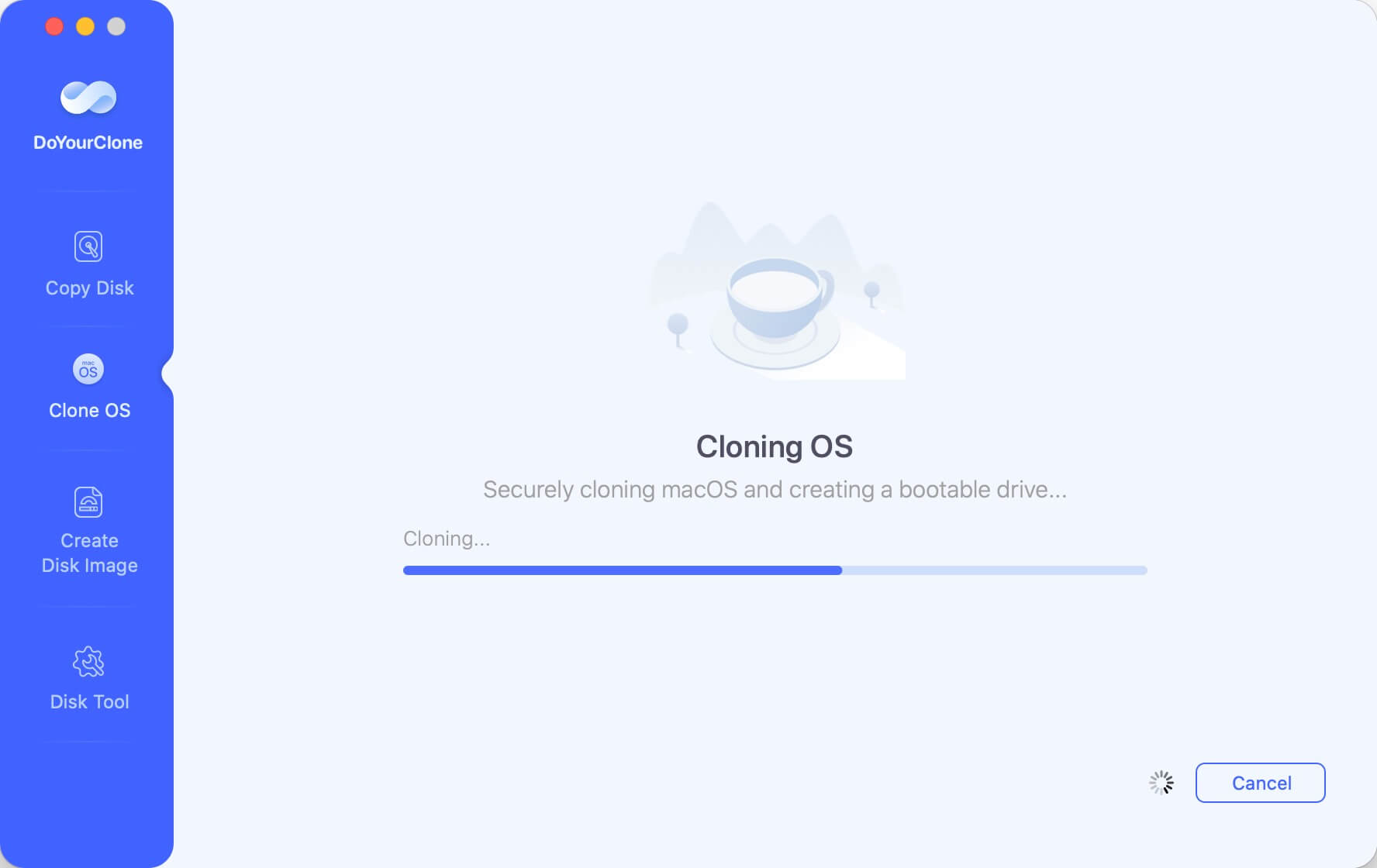
Once the process gets finished, you can use the external hard drive as the bootable disk or just keep it as an offline full backup..
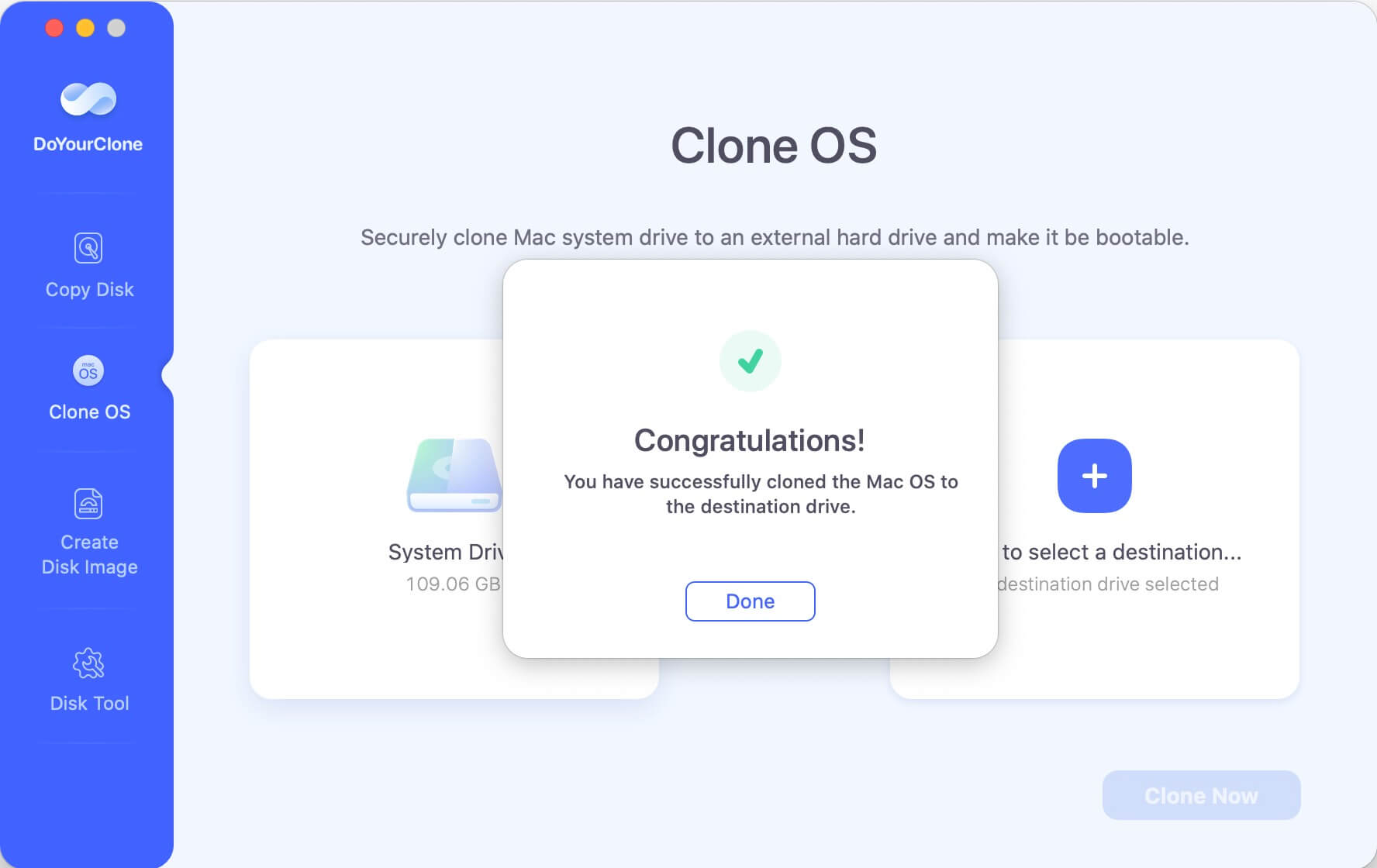
It is more efficient to use mirrored volumes to do random disk read operations. A disk failure can be repaired quickly. Mirrored volumes use the least space, and disk writing operations are the least efficient.
📍 Note: When mirroring or cloning hard drive in these ways, the destination drive will be overwritten. If you used an old drive as destination drive, ensure to back up or move the important data to another place if necessary. Otherwise, it's better to use an new or empty hard drive as the destination drive for disk mirroring.
Conclusion:
A lot of people think of mirroring as a backup plan. No, it is not! Allow me to be crystal clear! There is a fundamental difference between backup and mirroring. Mirroring, on the other hand, focuses on keeping your system running at all times with real-time data replication in the event of a drive failure, which is useful in the event of a drive failure.
Should you need to mirror any hard drive in Windows or macOS, download and try the software DoYourClone, which can help your create an exact copy of hard drive with everything, including system, settings, programs and personal files.

DoYourClone - Best Disk Clone Software
DoYourClone is a 100% safe, powerful and easy-to-use disk cloning program. It supports to clone any hard drive, clone HDD to SSD, upgrade old drive to new drive, create bootable clone backup for Windows and macOS. With this program, you can easily clone any hard drive. It supports sector by sector clone, SSD upgrade clone, etc.
